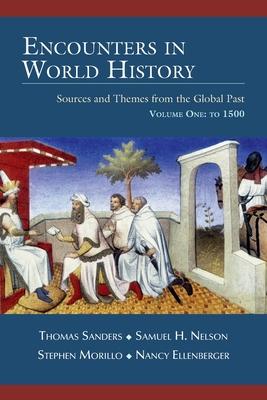Encounters in World History is a collection of primary sources from the human past organized under the overarching theme of "encounters." With the source materials structured in this way, the book makes it easy for students to analyze these texts in a meaningful comparative context. How, for example, did different cultures conceive of the relationship between humans and the divine? What constituted legitimate authority in different value systems? How did the relationship between the individual and the collective change under the pressures of two world wars and severe economic collapse in the first half of the twentieth century? In more recent times, how did nationalism become the dominant ideology around the globe and what different forms has nationalism taken?
Designed for use in World Civilization and World History courses, the two volumes of this book introduce students to some of the most important concepts that historians and other social scientists utilize in their study of the human past. Each volume is organized in a broadly chronological fashion into parts. Within each part, each chapter is then structured around a particular theme, with the idea of "encounters" always in mind. In this way, students can engage with general concepts such as authority, violence, gender, transcendent spirituality, and more -- concepts highly useful in analyzing historical situations from global human history.
Beyond the introduction to key concepts that it offers, Encounters in World History helps instructors address the twin problems of context and comprehension -- perennial issues in World Civilization courses. The selections of source materials included in the book present the historical evidence for various cultural encounters, from the earliest human societies to the present day, in a clear and direct manner. But by further concentrating that source material around themes, the two volumes not only situate the evidence in accessible contexts that allow for more significant comparisons, but also make the problems the sources address more comprehensible, providing unity and coherence to the concepts the instructors are working to get across.
The authors hope that by means of the "encounters" format and the thematic structure of the chapters, the book will participate productively in the current effort to present world civilization and history in an integrated and meaningful fashion. They aspire, as well, to assist instructors in providing students not merely with new information, but also with new ways of thinking about the human historical experience.
